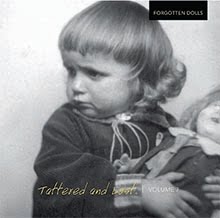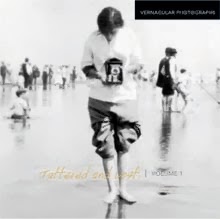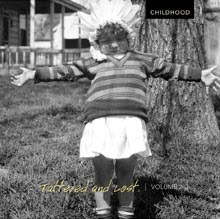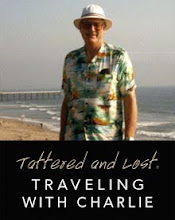I've posted some fruit labels in the past and have said if you're looking for something fun, colorful, easy to store, and relatively inexpensive to collect keep fruit and vegetable labels in mind.
This particular label comes from Bert's collection.
Click on image to see it larger.
My first thought when looking at it is how easy it would be to revise it and make it into an image for a holiday greeting card. Mentally that was about as far as I got.
I then began a Google search and found the label for sale at various sites. Okay, fine and dandy, but that didn't give me any information. Then I typed in "Bruce Church Inc." and stumbled upon this:
THE DEATH OF CESAR CHAVEZCesar Estrada Chavez died peacefully in his sleep on April 23, 1993 near Yuma, Arizona, a short distance from the small family farm in the Gila River Valley where he was born more than 66 years before.The founder and president of the United Farm Workers of America, AFL-CIO was in Yuma helping UFW attorneys defend the union against a lawsuit brought by Bruce Church Inc., a giant Salinas, Calif.-based lettuce and vegetable producer. Church demanded that the farm workers pay millions of dollars in damages resulting from a UFW boycott of its lettuce during the 1980's. Rather than bring the legal action in a state where the boycott actually took place, such as California or New York, Church "shopped around" for a friendly court in conservative, agribusiness-dominated Arizona-where there had been no boycott activity."Cesar gave his last ounce of strength defending the farm workers in this case," stated his successor, UFW President Arturo Rodriguez, who was with him in Arizona during the trial. He died standing up for their First Amendment right to speak out for themselves. He believed in his heart that the farm workers were right in boycotting Bruce Church Inc. lettuce during the l980's and he was determined to prove that in court." (When the second multimillion dollar judgement for Church was later thrown out by an appeal's court, the company signed a UFW contract in May 1996.After the trial recessed at about 3 p.m. on Thursday, April 22, Cesar spent part of the afternoon driving through Latino neighborhoods in Yuma that he knew as a child. Many Chavezes still live in the area.He arrived about 6 p.m. in San Luis, Arizona-about 20 miles from Yuma, at the modest concrete-block home of Dofla Maria Hau, a former farm worker and longtime friend. Cesar and eight other UFW leaders and staff were staying at her house in a poor farm worker neighborhood not far from the Mexican border.Cesar ate dinner at around 9 p.m. and presided over a brief meeting to review the day's events. He had just finished two days of often grueling examination by attorneys for Bruce Church Inc.He talked to his colleagues about taking care of themselves-a recent recurring theme with Cesar because he was well aware of the long hours required from him and other union officers and staff. Still, he was in good spirits despite being exhausted after prolonged questioning on the witness stand; he complained about feeling some weakness when doing his evening exercises.The UFW founder went to bed at about 10 or 10:30 p.m. A union staff member said he later saw a reading light shining from Cesar's room.The light was still on at 6 a.m. the next morning. That was not seen as unusual. Cesar usually woke up in the early hours of the morning well before dawn to read, write or meditate.When he had not come out by 9 a.m., his colleagues entered his bedroom found that Cesar had died apparently, according to authorities, at night in his sleep.He was found lying on his back with his head turned to the left. His shoes were off and he still wore his clothes from the day before. In his right hand was a book on Native American crafts. There was a peaceful smile on his face. (SOURCE: United Farm Workers)
And this:
Farm Workers Sign Accord With Lettuce Growers, Ending a Long and Bitter ConflictBy CAREY GOLDBERGPublished: May 30, 1996SALINAS, Calif., May 29 — After nearly 18 years of supermarket boycotts, legal clashes and bitter conflicts in the fields, the United Farm Workers of America and one of the nation's top lettuce growers signed a work contract today, laying to rest one of the oldest American farm labor disputes.Along with setting out the terms for five years of employment for more than 400 workers who pick Red Coach lettuce, mainly in the Salinas Valley, the agreement appeared to mark the passing of a generation of internecine farmer-laborer fights over California's bounty, labor analysts said.Things change, life is changing rapidly," said Steve Taylor, president of Bruce Church Inc., which grows Red Coach lettuce. "Businesses that don't change become extinct. And unions are the same way."When the Red Coach conflict began, Mr. Taylor's father, Ted, was at the helm of Bruce Church, then the second largest lettuce grower in the country, and Cesar Chavez, the farm labor organizer, headed the United Farm Workers, which he had founded. (SOURCE: NY Times)
There are a variety of other posts online about Bruce Church Inc. including a case that went to the Warren Burger Supreme Court in 1970 in which the ruling was in Church's favor.
As to Bruce Church I think you'll be surprised to find the following:
Fresh Express Inc.1020 Merrill StreetSalinas, California 93901U.S.A. Website: http://www.freshexpress.comWholly Owned Subsidiary of Chiquita Brands International Inc.Incorporated: 1978 as Red Coach FoodsEmployees: 2,500Sales: $900 million (2006 est.)NAIC: 311423 Dried and Dehydrated Food ManufacturingA subsidiary of Chiquita Brands International, Inc., Fresh Express Inc. is the market leader in the consumer packaged salad business. The Salinas, California-based company essentially invented the category, and today produces 40 million pounds of salad each month. Every week more than 20 million bags of Fresh Express salads are eaten by consumers. Product categories include Crispy Lettuces, featuring several ready-to-eat salad mixes using blends of iceberg, romaine, and green leaf lettuce along with carrots and red cabbage; Tender Lettuce Mixes, which include other types of lettuce and spinach leaves mixed with such ingredients as red cabbage, radishes, and carrots; Flavorful Whole Baby Blends, using baby leaves of various types of lettuce and spinach and other ingredients; organic mixes; complete salad kits that come with dressings, croutons, bacon crumbles, and other ingredients; and specialty salads, including a variety of cole slaws.PIONEERING REFRIGERATED LETTUCE SHIPPING: 1926Fresh Express was established by Bruce Church Inc., a company founded by Bruce Church in Salinas, California. Originally from Ireland, Church’s family had come to California by way of Canada and New York in 1875 and was originally involved in timber before turning to stock raising. Born in 1900, Church studied business economics at the University of California at Berkeley and then went to work for a produce shipper. In 1926 he found a financial backer in Whitney Knowlton, who provided $3,000 to buy a field of head lettuce, which Church packed in ice and shipped to the eastern markets. The shipment garnered $100,000 for the two men from enthusiastic customers. One company legend holds that the term iceberg lettuce originated with these deliveries, as children in Maine greeted the arrival of the vegetable shipments with shouts of “The icebergs are coming!” In any event, Church’s idea paid off, leading to the creation of Bruce Church, Inc., and turning its founder into one of the valley’s largest produce growers and shippers.Church died in 1958 and son-in-law Edward “Ted” Taylor took charge and proved to be an innovator in his own right. Because produce was a commodity and subject to low profits, it was natural that shippers like Bruce Church Inc. would look to increase margins by adding value to their products. In the mid-1960s California lettuce growers introduced packaged shredded lettuce, an idea well ahead of its time. Although consumers were resistant, some fast-food restaurants embraced the idea because of the convenience, but by 1980, according to the New York Times, it still only accounted for about 5 percent of all lettuce sales. The biggest obstacle to gaining acceptance in the market was the product’s short shelf life. According to Forbes, “Once it’s cut, lettuce, like any plant, breathes in, or ‘respires,’ oxygen while giving off carbon dioxide, water and heat. Left in the open air, the lettuce will respire as much oxygen as it can get, speeding up its own decomposition.” Placing the shredded lettuce in a simple plastic bag did nothing to control the lettuce’s intake of oxygen, however.To solve the respiration problem, a Whirlpool subsidiary called TransFresh Corporation, began experimenting with controlled- and modifiedatmosphere packaging. Taylor bought the company for Bruce Church Inc. in 1966 and two years later formed a venture called Trim Fresh to develop a packaged salad for the foodservice channel. The technology failed to measure up to the potential of the concept, however, and eventually Trim Fresh was shut down. However, company researchers continued to further the technology, so that in 1978 Taylor revived the packaged salad idea as Red Coach Foods (drawing its name from the company’s popular Red Coach lettuce). The company was able to drum up some foodservice business, selling packaged shredded lettuce and other raw produce to the likes of McDonald’s and Burger King.In 1981 Ted Taylor asked his son Steve to spearhead an effort to sell packaged salads to the retail market. However, the requirements of foodservice customers were not the same as retailers, who needed a much longer shelf life. Once again the film available for packaging was not up to the task and after two years Steve Taylor left. He had never intended to become involved in the family business, having earned a degree in psychology from the University of California at Berkeley, and for a time he pursued a career in social work. He traveled east to earn a Harvard University M.B.A. After a stint running a Los Angeles restaurant, he returned to the family business in 1987, but while he was away film suppliers had made significant progress on meeting the needs of TransFresh. With a viable retail product in sight, Taylor again devoted himself to the effort, working closely with TransFresh and the film manufacturers to develop a bag capable of breathing, allowing oxygen in and carbon dioxide out. In addition, researchers learned to introduce nitrogen into the bag to lower oxygen levels in order to extend shelf life. (SOURCE: Encyclopedia.com)
So you just never know where a little old piece of paper might take you. And for me it comes down to Chief Justice Warren Burger because Burger's grandson and family once lived across the street from me. Not where I thought I'd end up when I scanned this image.












No comments:
Post a Comment